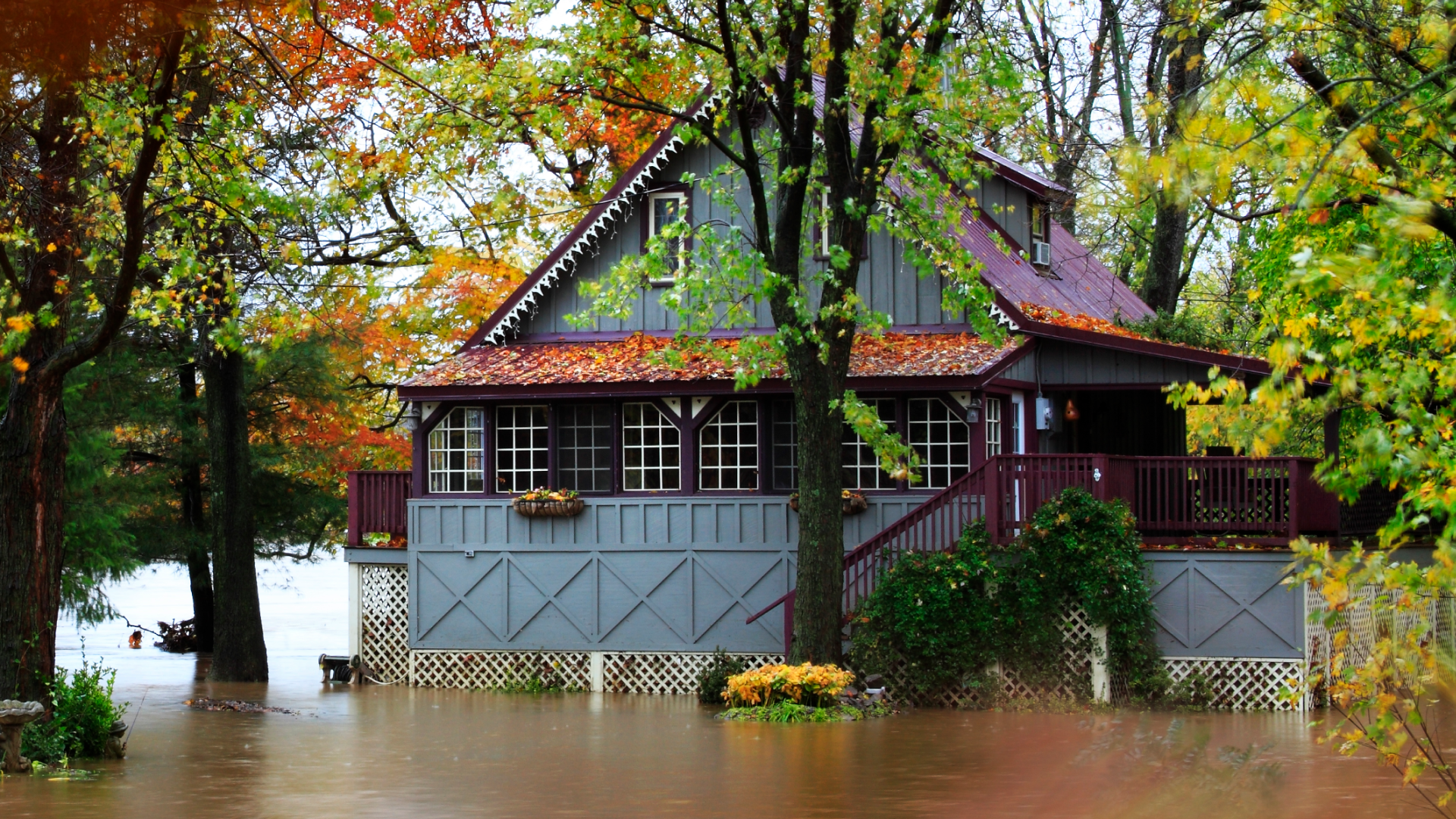Welcome to Claims Diary, an ongoing series where we interview real people who filed real insurance claims to learn about how the claims process actually went.
Owning a home means taking on financial risks. A home is likely your most expensive asset, which is why it’s important to properly insure it with a homeowners insurance policy. Homeowners insurance protects you and your home from the unexpected, like damage from fire, lightning, and break-ins, but it does not cover floods.
If you want to be fully protected from flooding, you should buy flood insurance, especially if you live in an area that’s high risk for flooding. But what actually happens if a flood destroys your home? How do you file a claim for flooding and who pays for repairs?
In this installment of our Claims Diary series, we talked to one family about filing a flood insurance claim after a hurricane resulted in their ground floor flooding.
Preparing for Hurricane Sandy
Maurice Gallagher and his wife owned and lived in a five bedroom duplex near the Great Egg Harbor Bay in Ocean City, New Jersey in late October of 2012 when Hurricane Sandy threatened the New Jersey coastline. Hurricane Sandy would go on to cause $29.4 billion in damage across the Garden State, including Maurice's home, but he had flood insurance before the storm made landfall.
“There was an anticipation for a loss,” Maurice explained. Unlike a sudden peril like an earthquake or mudslide, homeowners may be able to prepare for a hurricane in advance. Hurricane Sandy first hit the Carribean before making its way to the East Coast of the United States, so by the time it was en route to New Jersey, Maurice knew he had to fortify his home as well as possible.
“We lifted a bunch of furniture. We took it out of the ground floor of the duplex and up high in the garage,” Maurice said. Flood insurance includes personal contents coverage, so Maurice's flood insurance could've helped pay to replace his furniture even if he had left it on the ground floor.
Hurricane Sandy hits home
“So we anticipated around a foot and a half of water at most because that’s the most we’d ever seen. And it ended up being about three feet to three and a half feet of water that got inside,” explained Maurice.
After the storm hit, Maurice, and many of his neighbors, called their flood insurance company. “I called my flood insurance company over the phone. I had to contact my homeowners insurance company too because I had roof damage.”
Flood insurance only covers flood damage, but homeowners insurance can cover lots of other types of damage, including wind damage, which is why the Gallaghers had to file two separate claims — one with their flood insurance provider for the flooding, and one with their homeowners insurance for everything else.
A long claims process
“I’ve had flood insurance since the day I bought the house,” Maurice explained, “Through the government.” Because Maurice lived in a high-risk flood zone along the Atlantic coast, he was eligible for coverage through a National Flood Insurance Program, which is managed by the Federal Emergency Management Agency (FEMA). Ocean City, New Jersey has participated in the NFIP since the program’s inception.
The NFIP underwrites most of the flood insurance policies in the U.S. and is sold in one of two ways: if you live in one of the NFIP’s participating communities, you’d buy directly through one of their servicing agents. If you do not live in one of those communities, you can buy flood insurance from a private company, and the policy will be administered by the NFIP. Private flood insurance that is not administered through the NFIP is becoming more popular, however those policies only make up around 5% of the flood insurance market.
“They sent someone to come see the damage,” Maurice said, “But the process took a while.” After Hurricane Sandy, the NFIP had a backlog of flood insurance claims, resulting in New Jersey’s Congressional delegation sending a letter to FEMA after South Jersey residents hadn’t received their payouts three months after hurricane originally hit. [1] In fact, Hurricane Sandy made landfall in New Jersey in late October, and by early February only about 30% of NFIP flood claims had been resolved, according to the office of former New Jersey Gov. Chris Christie.
Living with the aftermath of flood damage
One silver lining in the Gallagher’s months-long flood claims process: their home was still habitable. “The house wasn’t uninhabitable, just the ground floor of the duplex,” explained Maurice.
Private flood insurance offers loss-of-use coverage, which is a type of coverage that pays for you to live elsewhere while your home is being repaired. An NFIP plan does not include this type of coverage, so the Gallaghers were lucky that the flooding didn’t result in unlivable conditions. That said, if the storm had significantly damaged the structure of the Gallagher’s home, like if their roof had completely been destroyed, their homeowners insurance loss-of-use coverage would have paid for them to live elsewhere.
Maurice, like so many other victims of Hurricane Sandy, had to learn to live with the destruction the storm caused — he eventually received his claim payouts, but it took months. “This town was pretty much turned upside down,” he said. The hardships that homeowners faced after Hurricane Sandy even led lawmakers and advocates to reconsider how the government handles flood claims and flood zoning. [2]
The Gallagher’s still live in Ocean City, in a home moderately more inland than their duplex that flooded. And they still have flood insurance as Ocean City remains high risk for flood damage.
Have a claims story of your own to share? Email your story to Kara.Mcginley@policygenius.com and you could be featured in a future Claims Diary
Image credit: Getty Images


